In this article, we will talk about the different procedures available for acne scar treatment in Nepal.
Acne scar is a mark left after your acne heals itself. In Nepal, we often know acne as pimples. Acne can sometimes leave long-lasting marks called acne scars.
Treatment of acne during initial days of acne eruption heals without any treatment and leaves no scar. In some cases, acne occurs time and again and when not treated well leaves a scar. Timely treatment of acne is necessary to prevent acne scars.
Also Read: Acne Scar Treatment in Nepal: Causes, Types, Prevention and Cure
All acne scars are not the same. Each type responds to treatment procedures differently.
This is why it is important to know their types and know what kind of scar you have. But most people always have mixed types of scar.
This type of scar is also called hypertrophic scars.
Unlike other kinds of acne scars that are depressed, raised hypertrophic scars are thick, lumpy formations that are raised than the normal skin surface.
Raised scars are seen more in the chest and back than on the face. They are formed by over-production of collagen during acne healing.
They are also called atrophic scars. They are relatively flat, thin scars. Depressed scars look sunken below the normal skin, hence creating an uneven skin surface.
Depressed scars are formed when enough collagen is not formed during acne healing.
Types of depressed scars:
Boxcar refers to scars with broad depressions and sharply defined edges. They are generally deep and U-shaped. However, the shallower (less deep) they are, the better they respond to acne scar removal treatments.
These are deep, narrow pitted scars. Ice picks are generally V-shaped and are the hardest to deal with because they can go deeper into the skin during formation.
These are also depressed scars with sloping edges. They are rolling with rounded edges and irregular appearance.
Depending on the type of acne scars and their intensity, there are a number of treatment procedures available to treat them.
There are numerous treatment procedures available to minimize/remove acne scars.
However, you need to understand that the basic working principle is the same for all the procedures.
Basically, all kinds of treatment focus on stimulating the production of collagen and/or elastin. Collagen and elastin are two substances that will work against acne scars. They will work on the tissue that is deformed by the acne scars and will make them almost like normal human skin.
This process is called Collagen Induction Therapy.
At Alka Cosmetic and Dermatology, we have the following treatments for you:
Platelets Rich Plasma Therapy, also called PRP Therapy, is a remedy against acne scar In this treatment, a small amount of blood sample is taken from the patient themselves. The platelets in the blood are separated from other cells. The platelet sample is then injected into the skin.
The platelets found in our blood stimulate the regrowth of collagen and elastin, the building blocks for healthy skin. When your own blood is injected back into your skin, the body naturally begins a healing process that helps rid of acne scars.
PRP contains growth factors and stem cells can stimulate the production of new collagen and elastin so that the scars lighten to give you fabulous, smooth skin.
When used in conjunction with microneedling, the procedure is called vampire facial.
There have been no serious side effects of PRP treatment recorded so far. PRP is created using your body’s own regenerative blood factors, so there is no risk of an allergic reaction.
Nevertheless, your treatment provider will see if you have any problem with the anesthetic that is applied on the scalp before injecting the platelets.
In the microneedling procedure, your dermatologist uses a special roller or device with needles to prick the skin. Microneedling is performed with a pen-shaped device known as Dermapen which uses fine needles that prick your skin with controlled intensity and depth. During the skin-pricking process, the skin produces more collagen in an effort to heal the small wounds from the needles. This stimulates new collagen production. Thus, microneedling is also known as collagen induction therapy or percutaneous collagen induction.
Although microneedling can be used to treat scars and stretch marks on other areas of the body, it can also be used with PRP treatment to treat acne scars on the face.
Basically, microneedling penetrates the skin and induces collagen production.
Unlike other minimally invasive skin corrective treatments like laser therapy, microneedling is safer for darker skin tones. This is because it doesn’t damage or remove the outer layer of the skin. Microneedling is relatively safer for thin and sensitive skin as well.
Skin needling may also be used for various other purposes like hair fall, pigmentation, drug absorption, burn scar, stretch marks.
The procedure has some pain during the procedure. Numbing cream is applied prior to the procedure for ease. Strict protection from the sun is a must after the procedure. With each session of microneedling, the skin tends to heal and the scars become shallow. A gap of four to six weeks is advised between the sessions.
When used in conjunction with PRP therapy, the procedure is called vampire facial.
Fillers are one of the temporary methods to treat acne scars. Usually, box scars and depressed scars will be benefitted by the procedure.
The results are temporary and might last only for one year or so. This procedure is helpful for someone who wants instant results as acne scar treatment is never a one-time treatment. Multiple sessions are always required.
Dermal fillers will help to raise the indentations and volume loss caused by acne, creating a smoother appearance. Certain acne scars, such as rolling scars and some less defined boxcar scars can be effectively treated with dermal fillers.
This method is most effective for boxcars and icepick scars.
TCA stands for trichloroacetic acid and the CROSS in the TCA Cross method stands for Chemical Reconstruction of Skin Scars.
The CROSS technique involves the targeted application of TCA into each individual depression to reconstruct scar tissue and even out the skin. This treatment is repeated every few weeks over the course of several months.
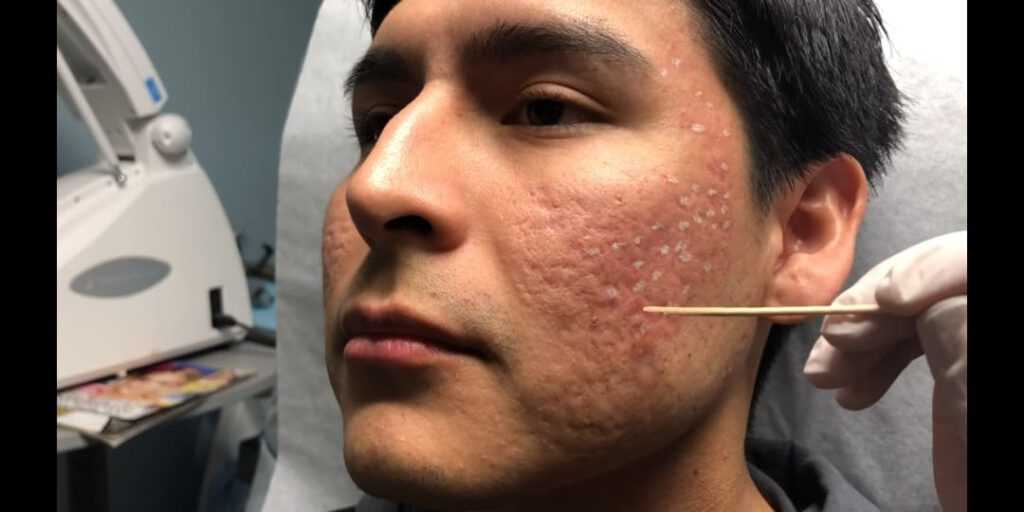
How the procedure works: Your treatment provider will apply a strong percentage of trichloroacetic acid on every scar. This stimulates skin remodeling.
Skin remodeling means your skin produces collagen and the scars will begin to heal themselves and become smaller.
You can’t apply the TCA smoothly all over the place. Each scar has to be treated one at a time. This is why the procedure makes small white dots on the face. Your treatment provider is very careful to not make these dots touch or connect with each other.
The CROSS method is more efficient at treating atrophic scars than a full face peel because only small amounts of the chemical are applied to targeted areas, reducing the amount of recovery time needed. A tooth -pic tip is used to deliver peel to each scar very precisely.
Some patients will experience a little burning at first. The burning sensation will go away in a few minutes.
Depending on the intensity of your scars, you should expect from 10% to 40% improvement in each treatment. Younger people will see results quickly and need fewer treatment sessions.
Okay, we’ll be honest here. This procedure seems a bit raw and scary. However, this procedure really works.
Usually, for deep scars, lasers and microneedling are less useful.
Basically, your dermatologist will spot and locate your acne scars in the beginning. After he marks them on your face, he will penetrate the skin with a needle (probably with a syringe needle).
The sharp edge of the needle is used to break fibrotic strands that are pulling the scar to the underlying tissue. The release of the fibrotic strands and new collagen deposition caused by wound healing leads to cosmetic improvement of the scar.
This is done to go underneath the skin and breakdown the acne scar tissues so that the scar raises up and eventually smoothes out with the normal skin surface.
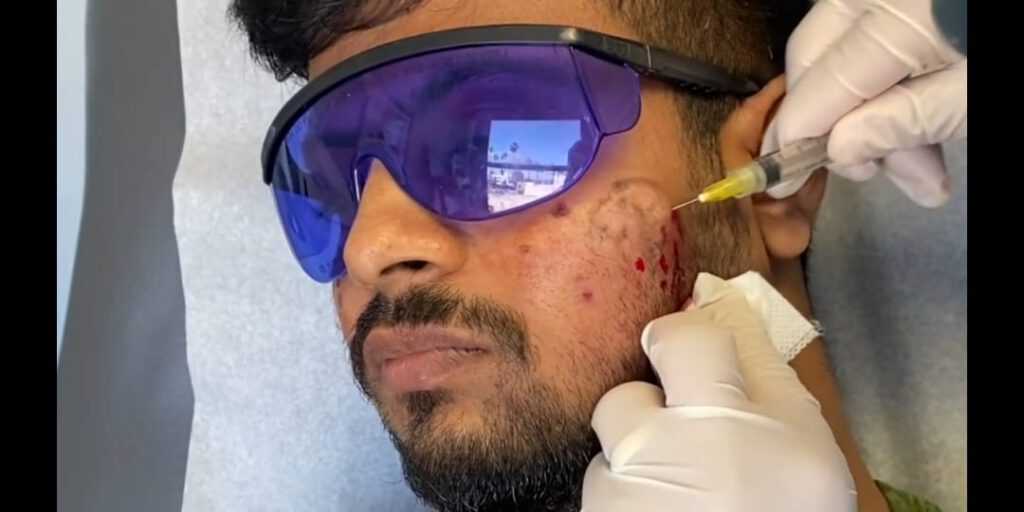
The face is a really sensitive area of the human body. Hence, to ensure that you are comfortable during the whole process, your dermatologist will first inject a substance to numb your skin. Once you are injected with the numbing agent, you won’t feel anything when he penetrates your skin with the needle.
Nevertheless, after the treatment, some clients might experience rashes and bruises. Note that this is a totally normal reaction from your skin and they should heal in no time.
Scar revision surgery is required for deeper and larger scars, especially scars formed due to chickenpox. The size of the chickenpox scars is usually larger and deeper and require scar revision surgery for complete removal. These types of scars if tried to be removed by lasers and other procedures take multiple sessions.
Among numerous treatments available for scar removal, microneedling radiofrequency works wonder for acne scars. Microneedling radiofrequency is especially effective for rolling and boxcars.
Microneedling radiofrequency is minimally invasive and is suitable for any skin type. The procedure is extremely safe and has a limited period of downtime.
Your treatment provider will use a device that has thin metallic needles spread at equal distances from each other. These needles carefully push past the surface layer of the skin during treatment. The radiofrequency pulses are then transmitted into the skin.
This procedure encourages collagen growth and tissue tightening precisely at predetermined depths in the skin.
This procedure works because the radiofrequency energy prompts the skin to produce collagen and elastin, both substances useful for the skin to look young, tight, and healthy skin.
What’s more, once you go through the microneedling radiofrequency procedure for acne scar treatment, you will also be rid of open pores, saggy skin, wrinkles, and fine lines.

The device for Microneedling Radiofrequency is called Fractional Micro Needle RF.
In simpler words, it is a device with tiny metallic needles. The procedure is just like in microneedling. The small needles prick the skin and induce collagen production. Collagen is a substance that is vital in skin health and recovery.
However, the additional benefit of this device is that the needles themselves generate heat when they penetrate the skin surface. This heat is produced by the radiofrequency system established in the device itself.
Thus, this device induces higher collagen stimulation and production than other ordinary procedures. We at Alka are proud to say that we have been using this device successfully on countless clients.
Among the various use of Carbon dioxide laser is the treatment of acne scars.
Laser treatment for acne scars focuses light on the top layers of your skin to break up scar tissue. At the same time, the treatment encourages new, healthy skin cells to grow and replace the scar tissue.
If you have active acne, a darker skin tone, or very wrinkled skin, you might not be a good candidate for this treatment. Only a dermatologist can tell you if laser treatment for acne scars is a good course of action for you.
We at Alka have been serving the lovely people of Kathmandu since 2012 A.D.
And your acne scar removal procedure will be performed by the best hands we have, Dr. Rajan Tajhya.
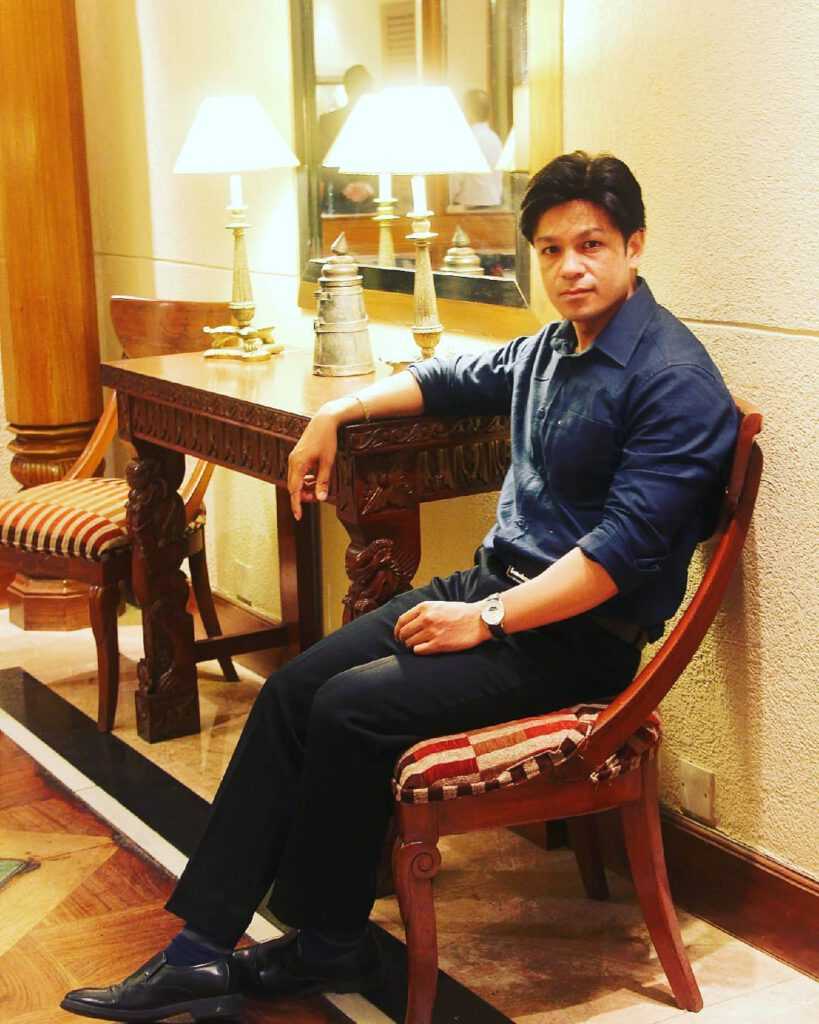
Dr. Rajan Babu Tajhya is a board-certified dermatologist and laser specialist. He completed his M.B.B.S. from Kathmandu University and Specialized Dermatology from Tribhuwan University in the year 2010 A.D.
Dr. Rajan Babu Tajhya keeps himself updated in the latest treatment procedures available in Dermatology. Our past clients frequently praise him for his calm personality and ethical treatment methodologies.
Dr. Tajhya has successfully done many treatment procedures in the past for countless clients struggling with acne scars. Alka is proud to state that he has done all his treatments with due diligence and perfection.
1) Microneedling: Rs. 3000
2) Microneedling + PRP: Rs. 4000
3) Microneedling + Subcision: Rs. 4000
4) Only Subcision: Rs. 2000
5) TCA Cross Peel: Rs. 1000
(Free in-between sessions)
Package for 8 months, 8 sessions: Rs. 30000
*Kindly expect realistic results.
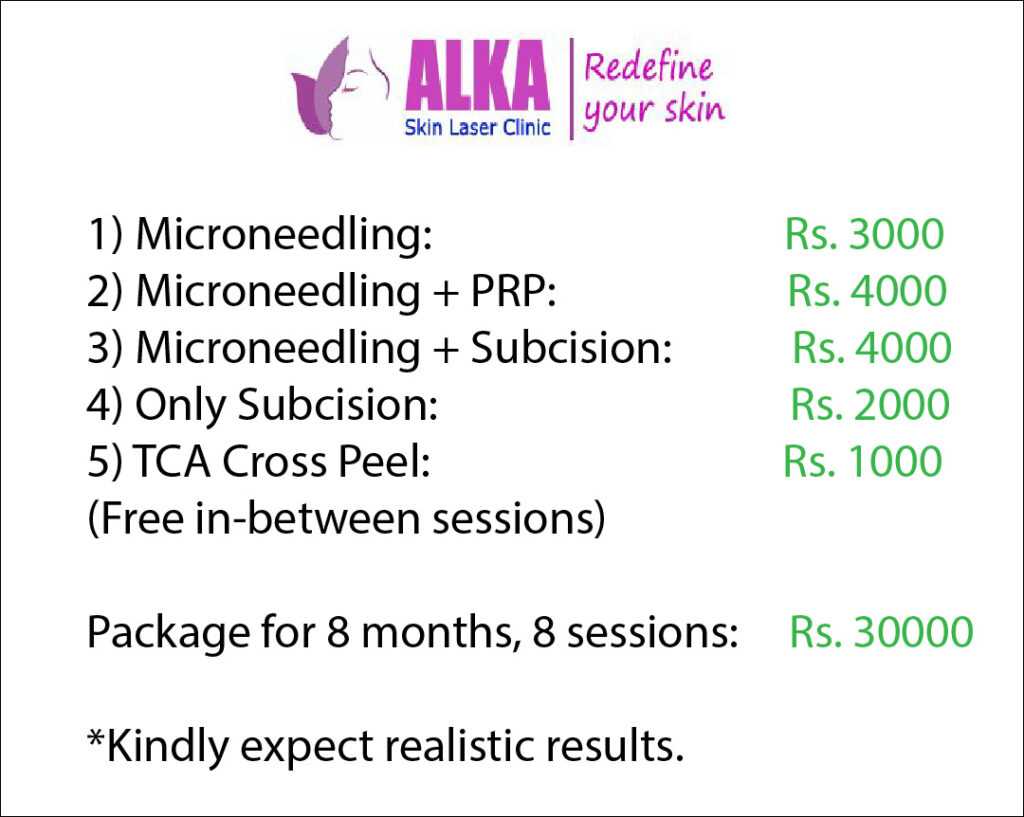
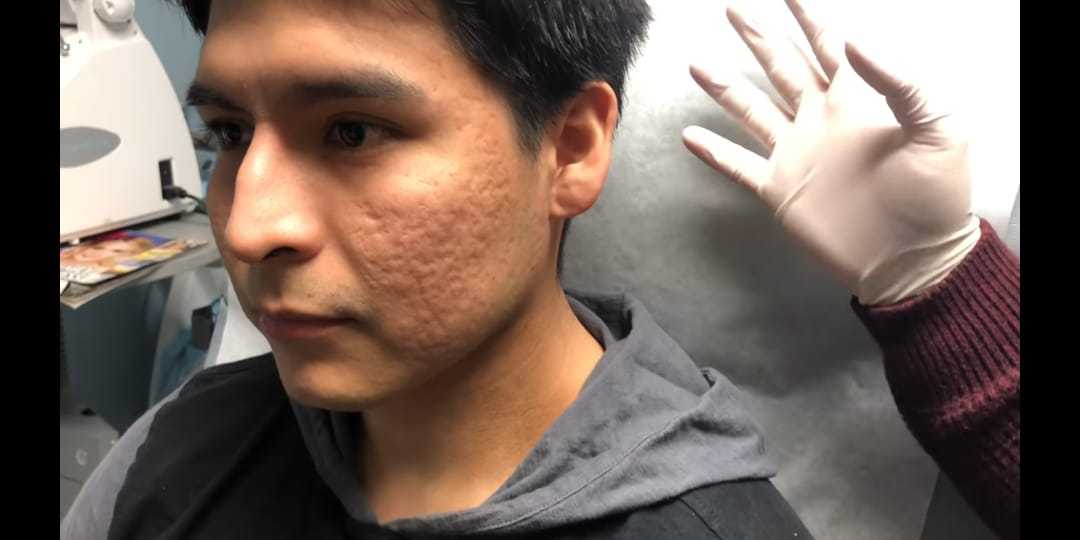
© 2019 Alka Cosmetic Surgery & Dermatology, All Rights Reserved. Designed & Developed by Nitesh Baidya
WhatsApp us
